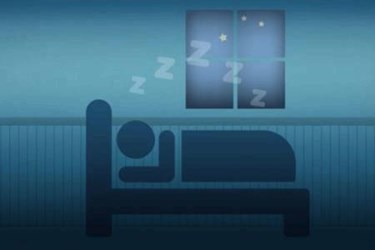MIT's AI-Powered Device Monitors Sleep Using Radio Waves
By Jof Enriquez,
Follow me on Twitter @jofenriq

Scientists at the Massachusetts Institute of Technology (MIT) Computer Science and Artificial Intelligence Laboratory (CSAIL) have developed a wireless device as a non-invasive alternative to body-worn sensors and electrodes. The new sensor uses radio signals to monitor sleep quality by relying on artificial intelligence to measure stages of sleep: light, deep, or rapid eye movement (REM).
Dina Katabi, the Andrew and Erna Viterbi Professor of Electrical Engineering and Computer Science, and her team at CSAIL, have been working on in-home sensors that capture radio frequency (RF) waves reflected off human bodies to monitor walking speeds in people at risk for falls. The group is using the same technology to detect a range of emotions using an algorithm that analyzes heartbeats.
“Our vision is developing health sensors that will disappear into the background and capture physiological signals and important health metrics, without asking the user to change her behavior in any way,” said Katabi.
For the latest application of their remote sensing technology to measure the body's vital signs, the team developed an AI algorithm called a deep neural network that translates pulse, breathing rate, and movement into sleep stages. The algorithm the MIT team developed is advanced enough to hone in on the sleep signal, and ignore other irrelevant data produced by the low-power radio frequency (RF) signals emitted by a wireless device, about the size of a laptop computer.
“It’s a smart Wi-Fi-like box that sits in the home and analyzes these reflections and discovers all of these changes in the body, through a signature that the body leaves on the RF signal,” said Katabi.
The main advantage is that it can be done right at home without disrupting bedtime routines, and minus the cumbersome electrodes that are typically attached to the scalp during an electroencephalogram (EEG) test to record brain wave patterns.
During testing in 25 people, the MIT team said they achieved readings that were about 80 percent accurate, which is comparable to the accuracy of EEG measurements.
“The opportunity is very big because we don’t understand sleep well, and a high fraction of the population has sleep problems,” said Mingmin Zhao, an MIT graduate student. “We have this technology that, if we can make it work, can move us from a world where we do sleep studies once every few months in the sleep lab to continuous sleep studies in the home.”
In-home wireless monitoring of sleep can eventually yield deeper insight into sleep disorders, which affect more than 50 million Americans, and conditions such as Alzheimer's and Parkinson's, which are known to disrupt sleep, according to the MIT scientists, who published their research work recently.
